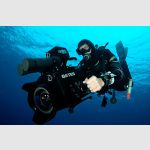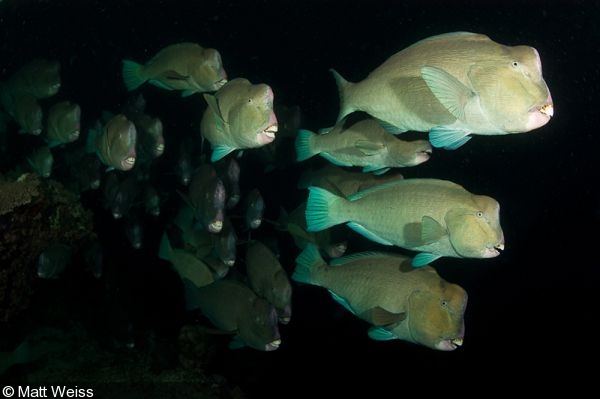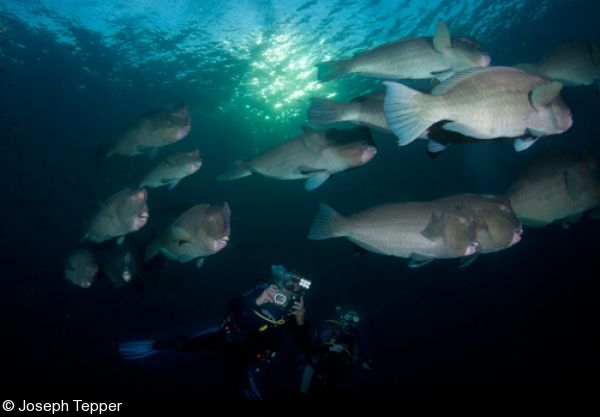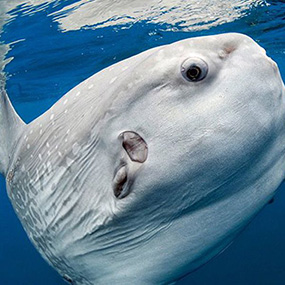Big Animals – Bumphead Parrotfish, Malaysia, Indonesia
|
Traveling in large schools, the colorful bumphead parrotfish use their head to “bump” against coral to break it into small pieces and make it easier to eat. Growing up to four feet long, the bumpheads are the largest parrotfish and impressive to capture with a camera. For photographers, the huge schools of vibrant green and yellow parrotfish make for great contrast against healthy coral and blue waters. Getting up close and personal with the bumpheads will reveal their very photogenic parrot-like beaks, which they use to grind coral. BORNEO, MALAYSIASchools of 30-plus bumphead parrotfish can be found around many dive sites but you’re more likely to get the shot early in the morning when the fish are calmer and before too many other divers have shown up. Recommended OperatorWhen to DiveBumphead parrotfish can be seen year round in Borneo. Pro TipsSince the dive starts while it’s still dark in the water, don’t fell you have to fight the dark conditions by exposing for a blue water background. Instead, embrace the darkness and make the parrotfish pop off a black background with strobes.
Parrotfish are shy subjects, even in large schools. Don’t chase them, and instead try to position yourself in their path so they approach you.
Carefully compose your images. Bumpheads are large fish that travel in huge schools so it's likely that you will have to cut off some fish. It's much better have the fish in the back of the school cut off than the ones in the front.—Matt Weiss
|
BALI, INDONESIAIt just so happens that one of the world’s best wreck dives also features some of the best encounters with bumphead parrotfish. Every morning at dawn, dozens of bumpheads swarm around the hull of the USAT Liberty, a WWII ship that rests on the black sandy slope of Tulamben, in Bali. Recommended OperatorsWhen to DiveThe dive is accessible year round, but the less touristy months in the winter will provide a more private encounter with the bumpheads. Pro TipsNo one likes to get up early on a dive trip, but to catch the best of the bumpheads, get your alarm clock ready. Exact times vary on the season, but you’ll want to be kicking out to the wreck (it’s a shore dive) while it’s still dark out. That way, you’ll beat the crowd and catch the most of the bumpheads when they arrive at dawn.
The bumpheads gather at different parts of the wreck during different parts of the year. Ask your guide where they have been seen recently so that you can be on the spot and ready.
Since it’s just the first of the morning light when the bumpheads arrive, make sure to have a focus light to help your camera and your eyes spot the parrotfish.
Also, it’s important to plan ahead for photographing the rest of the Liberty after the fish have moved on. A fisheye zoom is a great choice for capturing the slightly skittish parrotfish, as well as the wide-angle coral growth on the wreck.—Joe Tepper OTHER LOCATIONSSingle bumphead sightings are possible at many locations throughout the Asia-Pacific region. However, there are only a few other places where the schooling is seen regularly. Mass spawning of hundreds of parrotfish is a rare sight to behold on the new moon in Palau. Go with Siren Fleet or Sam’s Tours. |
RELATED CONTENT
Featured Photographer




 Antarctica
Antarctica




